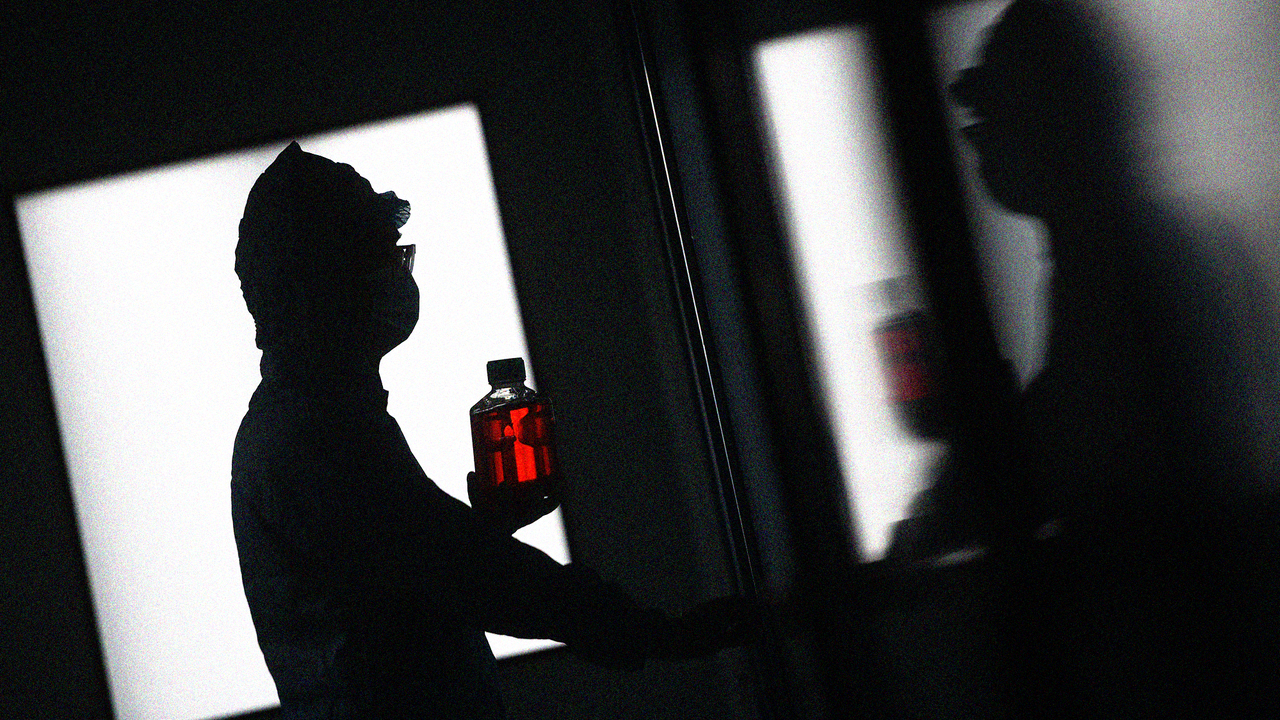Scientists have yet to determine the origins of Covid-19, years after it touched off the worst pandemic in more than a century. Some of the closest related viruses to the one that causes it, SARS-CoV-2, were found in bats roughly 1,000 miles (1,600 kilometers) from the central Chinese city of Wuhan, where the disease erupted in late 2019. Initially, cases were tied to a fresh food market and possibly the wildlife sold there. An investigation in early 2021 highlighted the possibility that certain mammals acted as a vector, transferring the virus from bats to humans. There are more politically charged theories. One is that the virus accidentally escaped from a nearby research laboratory, a thesis underscored by the FBI in February. Another theory is that SARS-CoV-2 entered China from another country via imported frozen food. Amid all the posturing, governments and scientists agree that deciphering the creation story is key to reducing the risk of future pandemics.
1. Why don’t we know where it came from?
Where, when and how a pathogen begins spreading in humans can be difficult, if not impossible, to pinpoint. Although SARS-CoV-2 is genetically similar to coronaviruses collected from bats, it may have followed a convoluted path to Wuhan, a city of 11 million people. Scientists are tracing the earliest known cases but the trail largely goes cold in early December 2019. Where a new disease starts spreading isn’t necessarily where it spilled over from the animal kingdom or first infected a human. HIV, for instance, is thought to have originated in chimpanzees in southeastern Cameroon. It didn’t begin spreading readily in people until the 1920s, when it reached the city of Kinshasa hundreds of miles away. Scientists reported that finding in 2014, some three decades after the AIDS pandemic was recognized.
2. Who’s looking?
The World Health Organization was asked in May 2020 to help identify the animal source of the virus and how it spread to humans. It convened a team of 17 international scientists, including one based in the US, and they conducted a four-week joint mission with 17 researchers from China. Their findings were released in a joint report in March 2021. Seven months later, WHO formed a more permanent scientific advisory group to handle the Covid origins work and future investigations. The panel released a preliminary report in June 2022 outlining work that was ongoing, and noted that key pieces of data weren’t available for a complete understanding of how the pandemic began. WHO Director-General Tedros Adhanom Ghebreyesus has called on China repeatedly to cooperate more fully in the origins search, writing letters to leaders including Premier Li Keqiang and Health Minister Ma Xiaowei to request more information. Chinese officials say they participate in work that is based on science and have shared information with the WHO. Numerous US intelligence agencies are also investigating.
Video Player is loading.
Current Time 0:00
Duration 0:00
Remaining Time -0:00
How Researchers Missed Clues in Wuhan
“One is left with circumstantial evidence of different kinds.”What is #Covid-19’s origin story and how did it get transmitted to humans? @MooreFound’s Dr. Fineberg discusses 3 scenarios
https://bloom.bg/3g93Wwk (Source: Quicktake)
3. What are the hypotheses about its emergence?
Debate about Covid’s emergence has coalesced around two competing ideas: an accidental laboratory escape or a spillover from animals. There is global agreement that the virus wasn’t part of a biological weapons program and intentionally released. Scientists involved in the 2021 WHO-led mission ranked four scenarios in order of likelihood:
LIKELY-TO-VERY LIKELY: the virus spilled over via an “intermediary” host species;
POSSIBLE-TO-LIKELY: the virus spilled over to humans directly from an animal reservoir;
POSSIBLE: the virus was introduced via the food chain by contaminated food or packaging;
EXTREMELY UNLIKELY: the virus emerged as a result of a laboratory-related accident.
Since no such intermediary host animal has so far been found, they said more research is required, including into the potential role that the trade in animals, animal products and frozen or refrigerated foods might have played. For their part, US intelligence agencies have offered differing analysis on whether the virus emerged naturally or spread due to a mishap at a Chinese laboratory. Christopher Wray, director of the Federal Bureau of Investigation, said Feb. 28 that his department had previously concluded that the virus most likely originated from a “potential lab incident” in Wuhan.
4. What do we know so far?
Bats were the source of two coronaviruses that caused lethal outbreaks in people during the past two decades — severe acute respiratory syndrome (SARS) and Middle Eastern respiratory syndrome (MERS). Many scientists consider the flying mammals the probable reservoir host for SARS-CoV-2 as well. (A reservoir host is an animal that permanently maintains a pathogen from which infection is transmitted to a defined target population.) After SARS-CoV-2 emerged, Shi Zhengli, who studies bat-borne coronaviruses at the Wuhan Institute of Virology, identified three closely related viruses that had been collected during the previous 15 years. The closest, about 96% identical, was isolated from a species of horseshoe bat, Rhinolophus affinis, in the southern Chinese province of Yunnan in 2013. Some researchers have linked that particular virus, known as RaTG13, to a mineshaft in Mojiang county there, where six men contracted a pneumonia-like disease in 2012 that killed three of them. Although RaTG13 and SARS-CoV-2 may share a common ancestor, they aren’t similar enough to indicate the pandemic virus was derived from the one in Yunnan. The sampling of bats in Hubei province, which includes Wuhan, hasn’t found any carrying SARS-CoV-2. Farmed palm civets in Hubei were found in 2007 to be naturally infected with SARS-like coronaviruses, as were horseshoe bats in 2005. Related coronaviruses have been found in other bat species and pangolins, a scaly, ant-eating mammal, elsewhere in Asia, highlighting the broad distribution that may have contributed to its evolution.
1. Why don’t we know where it came from?
Where, when and how a pathogen begins spreading in humans can be difficult, if not impossible, to pinpoint. Although SARS-CoV-2 is genetically similar to coronaviruses collected from bats, it may have followed a convoluted path to Wuhan, a city of 11 million people. Scientists are tracing the earliest known cases but the trail largely goes cold in early December 2019. Where a new disease starts spreading isn’t necessarily where it spilled over from the animal kingdom or first infected a human. HIV, for instance, is thought to have originated in chimpanzees in southeastern Cameroon. It didn’t begin spreading readily in people until the 1920s, when it reached the city of Kinshasa hundreds of miles away. Scientists reported that finding in 2014, some three decades after the AIDS pandemic was recognized.
2. Who’s looking?
The World Health Organization was asked in May 2020 to help identify the animal source of the virus and how it spread to humans. It convened a team of 17 international scientists, including one based in the US, and they conducted a four-week joint mission with 17 researchers from China. Their findings were released in a joint report in March 2021. Seven months later, WHO formed a more permanent scientific advisory group to handle the Covid origins work and future investigations. The panel released a preliminary report in June 2022 outlining work that was ongoing, and noted that key pieces of data weren’t available for a complete understanding of how the pandemic began. WHO Director-General Tedros Adhanom Ghebreyesus has called on China repeatedly to cooperate more fully in the origins search, writing letters to leaders including Premier Li Keqiang and Health Minister Ma Xiaowei to request more information. Chinese officials say they participate in work that is based on science and have shared information with the WHO. Numerous US intelligence agencies are also investigating.
Video Player is loading.
Current Time 0:00
Duration 0:00
Remaining Time -0:00
How Researchers Missed Clues in Wuhan
“One is left with circumstantial evidence of different kinds.”What is #Covid-19’s origin story and how did it get transmitted to humans? @MooreFound’s Dr. Fineberg discusses 3 scenarios
https://bloom.bg/3g93Wwk (Source: Quicktake)
3. What are the hypotheses about its emergence?
Debate about Covid’s emergence has coalesced around two competing ideas: an accidental laboratory escape or a spillover from animals. There is global agreement that the virus wasn’t part of a biological weapons program and intentionally released. Scientists involved in the 2021 WHO-led mission ranked four scenarios in order of likelihood:
LIKELY-TO-VERY LIKELY: the virus spilled over via an “intermediary” host species;
POSSIBLE-TO-LIKELY: the virus spilled over to humans directly from an animal reservoir;
POSSIBLE: the virus was introduced via the food chain by contaminated food or packaging;
EXTREMELY UNLIKELY: the virus emerged as a result of a laboratory-related accident.
Since no such intermediary host animal has so far been found, they said more research is required, including into the potential role that the trade in animals, animal products and frozen or refrigerated foods might have played. For their part, US intelligence agencies have offered differing analysis on whether the virus emerged naturally or spread due to a mishap at a Chinese laboratory. Christopher Wray, director of the Federal Bureau of Investigation, said Feb. 28 that his department had previously concluded that the virus most likely originated from a “potential lab incident” in Wuhan.
4. What do we know so far?
Bats were the source of two coronaviruses that caused lethal outbreaks in people during the past two decades — severe acute respiratory syndrome (SARS) and Middle Eastern respiratory syndrome (MERS). Many scientists consider the flying mammals the probable reservoir host for SARS-CoV-2 as well. (A reservoir host is an animal that permanently maintains a pathogen from which infection is transmitted to a defined target population.) After SARS-CoV-2 emerged, Shi Zhengli, who studies bat-borne coronaviruses at the Wuhan Institute of Virology, identified three closely related viruses that had been collected during the previous 15 years. The closest, about 96% identical, was isolated from a species of horseshoe bat, Rhinolophus affinis, in the southern Chinese province of Yunnan in 2013. Some researchers have linked that particular virus, known as RaTG13, to a mineshaft in Mojiang county there, where six men contracted a pneumonia-like disease in 2012 that killed three of them. Although RaTG13 and SARS-CoV-2 may share a common ancestor, they aren’t similar enough to indicate the pandemic virus was derived from the one in Yunnan. The sampling of bats in Hubei province, which includes Wuhan, hasn’t found any carrying SARS-CoV-2. Farmed palm civets in Hubei were found in 2007 to be naturally infected with SARS-like coronaviruses, as were horseshoe bats in 2005. Related coronaviruses have been found in other bat species and pangolins, a scaly, ant-eating mammal, elsewhere in Asia, highlighting the broad distribution that may have contributed to its evolution.






